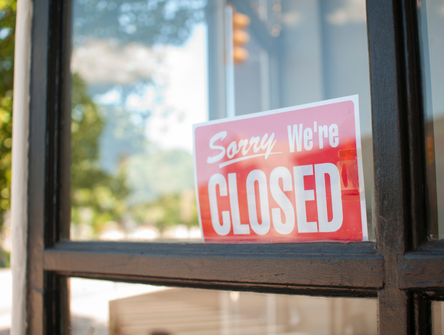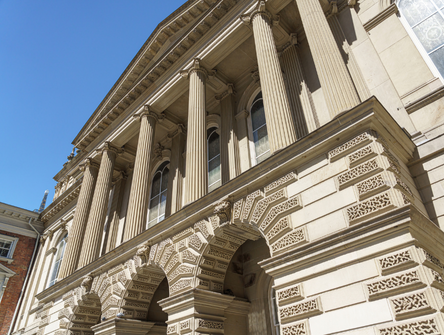Sustaining progress in Indigenous legal education
Since the release of the TRC report in 2015, momentum has been building toward Indigenous justice and reconciliation. But stronger and deeper commitments and actions are necessary.

Education is vital to reconciliation, former Chief Justice Beverly McLachlin affirmed back in 2015: “Those involved with the justice system, be they judges, lawyers or justice officials, should understand indigenous history, legal traditions and customary laws.” A growing number of justices are similarly recognizing that Indigenous legal education is key to transformative change and reconciliation. Since the Truth and Reconciliation Commission’s Final Report and 94 Calls to Action, important progress has been made in Indigenous legal education in Canadian law schools. This momentum must be sustained.
In its final report, the TRC recognized that legal education and training is an essential part of reconciliation. Calls to Action 27 and 28 asks law societies and law schools to require that lawyers receive training in Indigenous and Aboriginal law, the history of residential schools, UNDRIP, the Crown-Indigenous relationship, and treaties. They should also receive skills training in intercultural competency, dispute resolution, anti-racism and human rights. These calls respond to the experiences of residential school survivors. During the claims adjudication process, lawyers and court staff lacked knowledge and cultural awareness related to the experiences and claims of survivors. These calls, however, also advance the broader philosophy underlying the 94 Calls to Action, in particular the ones relating to justice.
The Canadian Council of Law Deans has since released two reports (2018 and 2021) that describe how law schools have undertaken the implementation of Call to Action 28. There are different curricular approaches. Some faculties mandate courses in Indigenous and Aboriginal law; others make them elective. Some offer standalone courses; others integrate them. Some allow students to choose from a “basket” of eligible courses that reflect their unique interests. The University of Victoria Faculty of Law offers a joint degree in Indigenous law —the Indigenous juris doctor. The University of Toronto, Osgoode Hall Law School at York University, the University of Ottawa and Dalhousie University offer certificates or specializations in Indigenous law.
Call to Action 28 focuses more on Indigenous cultural competency training, which the University of British Columbia has responded to by offering a certificate program. Law schools are also implementing experiential learning opportunities, such as law camps at University of Victoria and Osgoode Hall, intensives at the University of Alberta and the Lincoln Alexander School of Law at TMU, the legal clinic at the University of British Columbia, and the national Kawaskimhon Aboriginal Law Moot. Many of these initiatives predate the calls and reflect the hard work of Indigenous and non-Indigenous scholars.
On governance, some faculties have created faculty committees or working groups to assist in this work. At the Lincoln Alexander School of Law, a committee is responsible for coordinating with other faculty committees and staff and overseeing the implementation of the calls. As noted above, several law schools are developing Indigenous law centres or institutes, such as the Indigenous Law Research Unit and National Centre of Indigenous Law at the University of Victoria, the Wahkotowin Law and Governance Lodge at the University of Alberta, the Indigenous Law Centre at the University of Saskatchewan, and the Indigenous Law and Justice Institute at the Bora Laskin School of Law at Lakehead University. These facilities support Calls 28 and 50.
Law schools must also address Indigenous faculty, staff, and student recruitment, retention and advancement. Implementing the calls require the work of Indigenous and non-Indigenous faculty, staff and students alike. However, Indigenous people are often called upon and self-motivated to do that work in an extracurricular capacity, without additional compensation or recognition (in the case of tenure). Similarly, law firms and law societies must appropriately compensate and advance Indigenous lawyers and staff who contribute to the advancement of the calls and the marketability of the firm’s services to highly valued Indigenous client communities. Ultimately, all legal organizations and the Social Sciences and Humanities Research Council of Canada must commit to funding these activities.
Call to Action 27, addressed to the Federation of Law Societies, focuses on skills-based training for legal professionals, rather than on educational content. The Federation’s position is that implementation is the responsibility of its member law societies; it imagines for itself a coordinating role. Non-regulatory bodies, such as the Canadian Bar Association and its provincial branches and Indigenous law sections have taken up Call to Action 27 most vigorously. The Advocates’ Society and Aboriginal Legal Services have each released guides for working with Indigenous peoples. The CBA has developed an Indigenous Cultural Competency program called The Path; along with its provincial branches, it continues to offer continuing professional development programming aligned with Calls to Action 27 and 28. Within government, the federal and provincial governments have implemented training for justice employees based on the San’yas Indigenous Cultural Safety Training Program.
Since the release of the TRC report in 2015, momentum has been building toward Indigenous justice and reconciliation. But stronger and deeper commitments and actions are necessary. As we advance together, we all will have to reflect on the underlying values and norms that motivate us to act and reconcile. And future generations of lawyers, and judges, must continue to reflect on the legal philosophy underlying the Supreme Court of Canada’s interpretation of s. 35 and its relation to UNDRIP. These activities speak to the spirit and underlying philosophy of the TRC and its calls.


